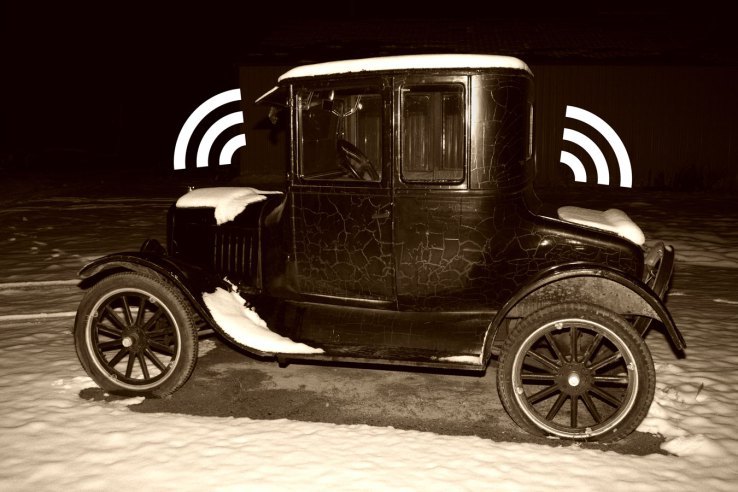From Ford T to 4G: a revolution in automotive technology
- Transfer

The automotive industry is on the verge of the biggest changes in more than 100 years. Cars connected to the Internet and smartphones will change our understanding of cars, given that about 90% of cars will be equipped with data transmission devices by 2020. The car industry did not know such seismic shifts since the Ford Model T became the first conveyor-made machine.
Until today, the term "connected car" was perceived by the industry mainly as another buzzword. However, it seems that right now we are on the verge of radical changes. Recent studies have confirmed that consumers are more than ready to use the fruits of this technological revolution - more than 80% of them believe that connecting a car to the Internet and a smartphone will become as commonplace as a smartphone or home devices connected to the network.
And if consumers are open to the possibilities of a new era, what exactly should they expect in the next couple of years and what prospects for technological development can the it industry offer in the more distant future?
Safety and Diagnostics
Although this does not seem to be the most interesting, studies have shown that increasing safety is what worries drivers the most. 73% of them say that this is the most important thing they expect from data technology in cars. Most likely, car manufacturers will focus on this in the near future.
The EU decree on eCall, which requires pre-installed devices to automatically dial emergency services on all new cars, will enter into force in 2015. The device will send important information such as the place and time of the accident to the emergency services; which means that drivers will be able to quickly get help anywhere in the EU. After all, it is expected that the response time in cases of an accident will be reduced by half.
A wide field for the development of diagnostics will also play a crucial role in the connected car revolution. Imagine an application that allows you to check the status of a car from a smartphone or tablet before you sit in it. You can call the mechanic for repairs, and not run into his charms in the middle of the road. This is a great example of how data transfer technologies help car enthusiasts and what car manufacturers such as Jaguar Land Rover are already working on.
Data features
A “byproduct” of a connected car is the sheer amount of data received, because one vehicle can produce terabytes of information. Research firm iGR predicts that the amount of data that cars will transmit over mobile networks will increase by 188% over the next 5 years. Car companies will be able to use this data for service improvements.
For example, dealer networks receive most of the profit from service, and not from sales. But as soon as the car runs out of warranty, customers seek other car services. Now manufacturers can influence the behavior of buyers, using the data obtained from diagnostic devices in cars, and allowing dealers to contact drivers in advance to agree on the necessary repairs.
What is ahead? Self-learning cars?
Looking into the future, we can say that the opportunities that are opening up through the joint use of wireless and automotive technologies are almost endless.
For example, data communications can have a huge impact on how emergency services work. In an ambulance equipped with wireless technology, paramedics can use video calls to share patient status with a consultant in the hospital. This means that it is possible to increase the so-called “golden hour” - the time during which treatment can help prevent the worst or even fatal consequences of a car accident, turn it into a “golden hour and a half”, which, no doubt, will help save many lives.
When the full era of cars that can drive without drivers comes, completely new ways to use data transfer technologies will appear. The machine will be a continuation of the office or living room. Say you will have the opportunity to arrange video conferences with friends or colleagues while traveling.
The culmination may be a "self-learning car" - a car that combines personal, contextual data and information updated online to personalize the driving experience. Such a machine may have artificial intelligence, which will be trained, receiving information about the daily behavior of the user, and adapt the car system to the driver. You will not need to ask the navigator for the way to your favorite restaurant - knowing your behavior, he himself will offer to go there.
Of course, all this has been a matter of some time, but it makes it clear that by combining the capabilities of a new era with glorious automotive traditions, the car may well give you a user experience that you have never known before.
Thank you for translating our friend Valentin Dombrowski, evangelist of Cleanweb and Vinli for life, vice president of innovation at Excursiopedia for work.
This Tuesday, together with Valentine, we are having an open meeting with Vinli representatives (these guys are making a platform for connected car applications in the USA). There will be beer, many interesting details and a hackathon discussion about smart technologies for cars. Come along .
